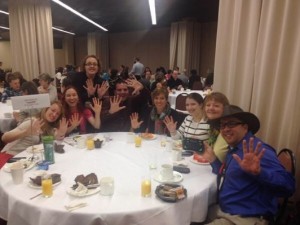We often hear about the importance of networking to grow a business. It is said that relationships are important because people typically work with people they like and trust. All of that is true.
However, even if one might be active in networking in person or via social media, there is no guarantee that those relationships will translate into a paycheck. For this reason, I discuss the definition of a tribe, how to build a proper one, and how to convert your marketing relationships into sales.
Marketing and sales are two different beasts. Marketing garners recognition by potential clients. Sales is closing the deal. Often, there is a wide disconnect between exposure and relationship building, interaction with people in network settings, and scheduling a meeting so that a business deal can blossom.
Let’s begin by discussing tribe building and other marketing avenues. What is a tribe?
 Definitions according to Merriam-Webster’s Collegiate Dictionary Eleventh Edition:
Definitions according to Merriam-Webster’s Collegiate Dictionary Eleventh Edition:
1a : a social group comprising numerous families, clans, or generations together with slaves, dependents, or adopted strangers.
2: a group of persons having a common character, occupation, or interest.
For our business purposes, a tribe is a closely-knit clan or community. It is a hard-working group of entrepreneurs offering a special skill to the community for the benefit of all its members. Members of a tribe support and assist one another. They defend their clan and protect one another. They all thrive because, as a united community, they are stronger than if they were alone.
Your tribes may be as diverse as your customer base, so there is no set number on how many tribes to which you can belong. You are only limited by the time constraints of a 24 hour cycle; therefore, select the tribe which best suits you. There are two different types of tribes: people with whom you collaborate and people to whom you wish to market.
Collaborations
For many linguists, the American Translators Association is a collaborative tribe. The Carolina Association of Translators and Interpreters can be considered a tribe or a sub-chapter of the larger ATA clan. We are a more intimate family, aren’t we?
 Here we become acquainted more intimately as we build a relationship. Nevertheless, we become a true tribe when we cooperate with and support one another.
Here we become acquainted more intimately as we build a relationship. Nevertheless, we become a true tribe when we cooperate with and support one another.
 Here we have an opportunity to assemble our network of quality language professionals. For instance, if an interpreting job presents itself and I am not available, I seek out a qualified colleague within our CATI chapter or ATA tribe to perform that assignment. This is a big win on two fronts: the client is happy, and goodwill with our colleague is achieved. Hopefully, members of our group will return the favor when the need arises.
Here we have an opportunity to assemble our network of quality language professionals. For instance, if an interpreting job presents itself and I am not available, I seek out a qualified colleague within our CATI chapter or ATA tribe to perform that assignment. This is a big win on two fronts: the client is happy, and goodwill with our colleague is achieved. Hopefully, members of our group will return the favor when the need arises.
Ponder this: there are myriads of translators and interpreters at all levels of quality in our state, country, and planet. Members of ATA and CATI invest time and money to hone their craft. Where are the rest of the translators and interpreters? They are not here, and they obviously should be. Consequently, I am more inclined to recruit associates in my tribes before I look elsewhere.
 Other Collaborative Clans in Our Industry:
Other Collaborative Clans in Our Industry:
American Translators Association
Atlanta Association of Interpreters and Translators
National Association of Judiciary Interpreters and Translators
International Association of Conference Interpreters
International Medical Interpreters Association
National Council on Interpreting in Health Care
Only you can determine how many clans suit your needs. Budget will be a factor, so ensure your membership is a fit.
The next blog will consider the Synergistic Tribe.

Pingback: Weekly translation favorites (Nov 21-27) | Lingua Greca Translations